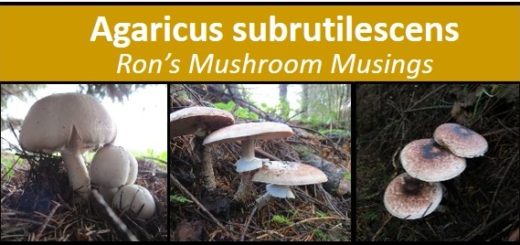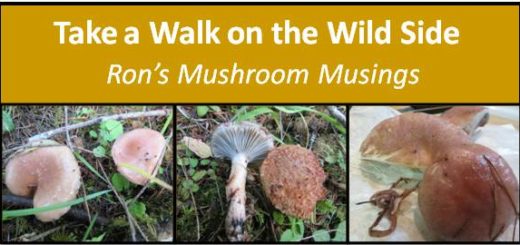What some parasites tell us
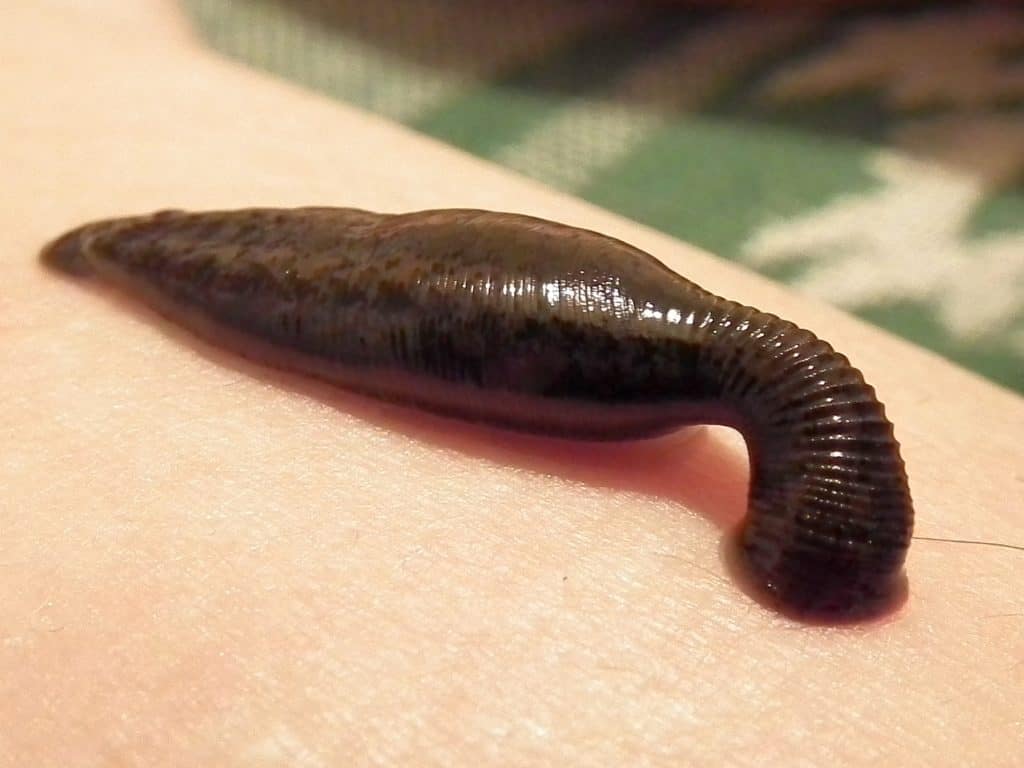
I am by no means an expert on parasites but I remember encountering a few of them in my youth. As a youngster my parents took our family to a small lake recommended by one of my Dad’s coworkers. I couldn’t wait to enter the water and since I couldn’t swim, I mostly stood around in the shallows near the shore. When my Mother called us all back for our picnic lunch I exited the water with half a dozen leeches dangling from my legs. After tugging on one I quickly came to the conclusion, as most young children would, that I was under attack by ominous creatures trying to eat me. While my Mother and I panicked, my Dad having milked cows and goats on the family farm, gave each a good pull leaving me with slightly red and somewhat bloody spots on my legs. My Dad told me not to worry, they were just leeches looking for blood, which at the time gave me zero comfort. I mentally recovered but to this day I do not wade or swim in small lakes. I also know about ticks, chiggers, mosquitoes, and bedbugs but all these creatures only tell us to be more careful when hiking or to stay away from sleazy hotels.
Now let’s look at parasites that indicate something we might be more interested in. Well, as enthusiastic mushroomers there are some parasites that can give us valuable information as to what mushrooms we might find coming up around them. These indicator parasites are actually plants that lack chlorophyll and therefore must obtain their carbohydrates from somewhere else. Unlike parasitic fungi like Hypomyces lactifluorum (lobster mushroom) that attack the fruiting bodies of specific fungal organism, these plants link themselves directly into the mycelium of certain genera of fungi. They are in effect the leeches of the plant world. There is no symbiotic relationship to be found here, just that big slurping sound, like when your straw gets to the bottom of a chocolate milkshake. Actually, I’m not really certain if any slurping sounds really occur, I was simply trying to conjure up a nice visual reference. So, let’s examine a few of these parasitic plants.
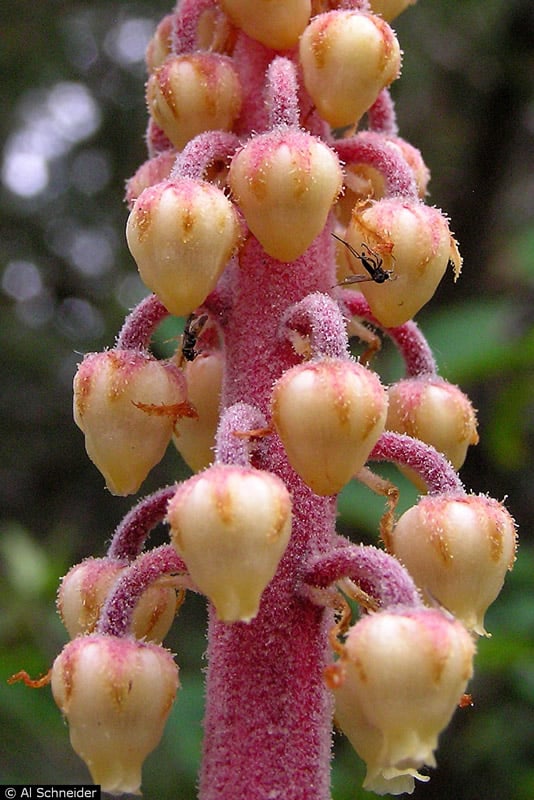
Pterospora andromedea or more commonly called pine-drops is a very attractive plant despite its bad habit of stealing food from others. This reddish colored plant can grow up to 36-inches and can be found growing and flowering during the summer months. Handling is not advised because of its sticky exterior so it is best enjoyed for its interesting and attractive characteristics. Being a fairly common plant, it can be found in multiple forested areas in Oregon at both high and low elevations. The interesting thing about this plant is it attaches itself to the mycelium of fungi in the genus Rhizopogon, known more commonly as truffles. While several host species of truffle have been identified, they are unfortunately not those highly prized by truffle hunters.
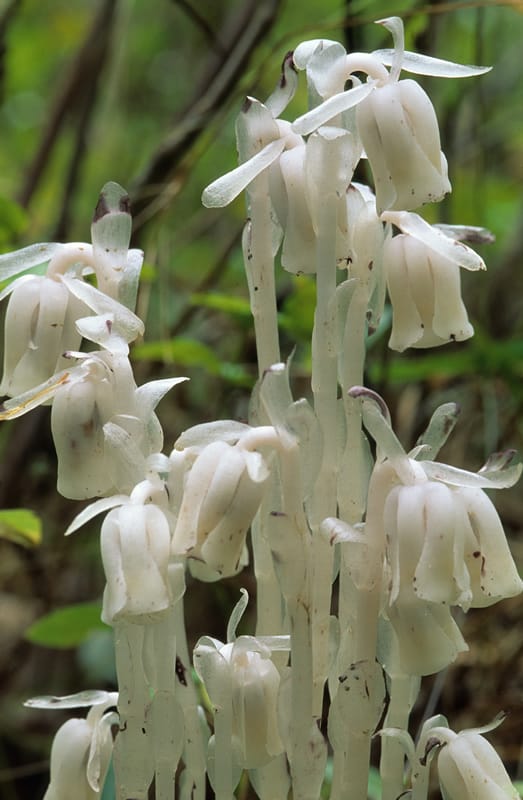
Monotropa uniflora, the Indian pipe or ghost pipe is easy to recognize by its ghostly white color. Growing to about 10-inches, this amazing looking plant can be found during the summer months from the west side of the Cascades to our coastal areas. Considered to be a rare plant, we have seen it on walks along the Siltcoos Lake Trail located just south of Florence. A major benefit of these parasitic plants is their ability to thrive in areas too dark for most chlorophyll based plants to survive. This particular plant is known to associate with members in Russelaceae, which includes the well know mushrooms in the genera Russula and Lactarius. Although more rare than pine-drops, being able to associate with a greater number of fungal species gives the Indian pipe more flexibility in where it’s able to establish itself.
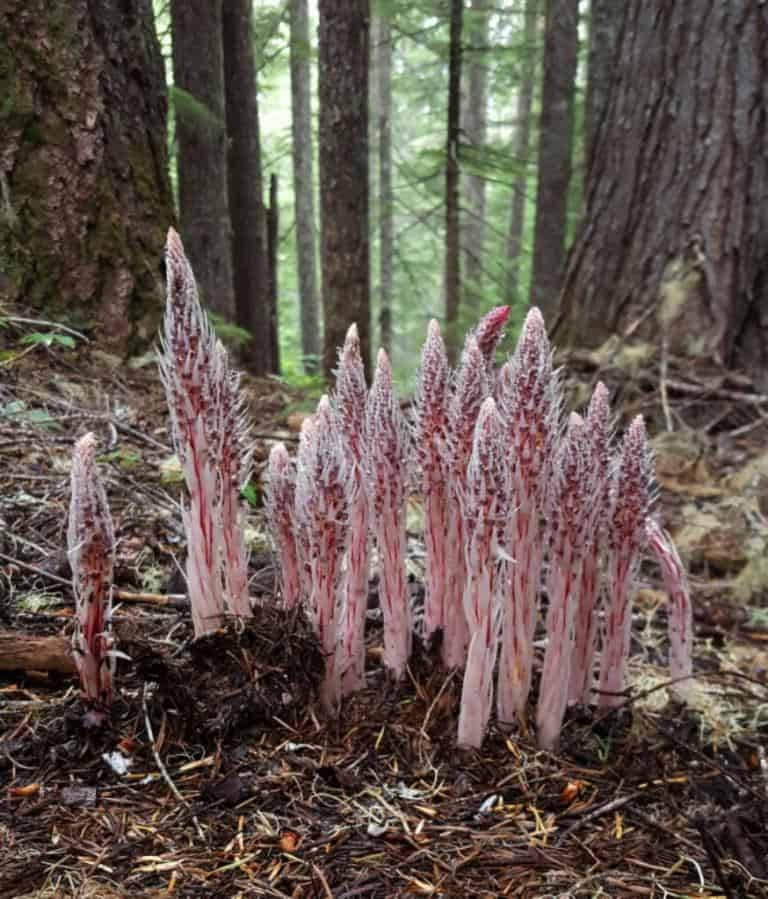
Allotropa virgata, commonly called the sugar-stick plant, can grow to 15 inches and luckily it is quite common in Oregon’s Forests. You can find this plant at the coast, the Cascades, and surprisingly even in the Lorane Valley. The plants common name, sugar-stick, refers to a sugary treat first given to kids hundreds of years ago. It was essentially the straight version of today’s candy cane, which was first introduced by a German candy maker in 1670 as a Christmas treat. How’s that for a worthless piece of trivia? Moving on, as you can see the white and red striped plant is easily recognizable and blooms in midsummer. The best part about finding this plant is its host is none other than the mycelium of the matsutake mushroom. This is a one host parasitic plant so no guessing is required as to who or what is supplying carbohydrates to it.
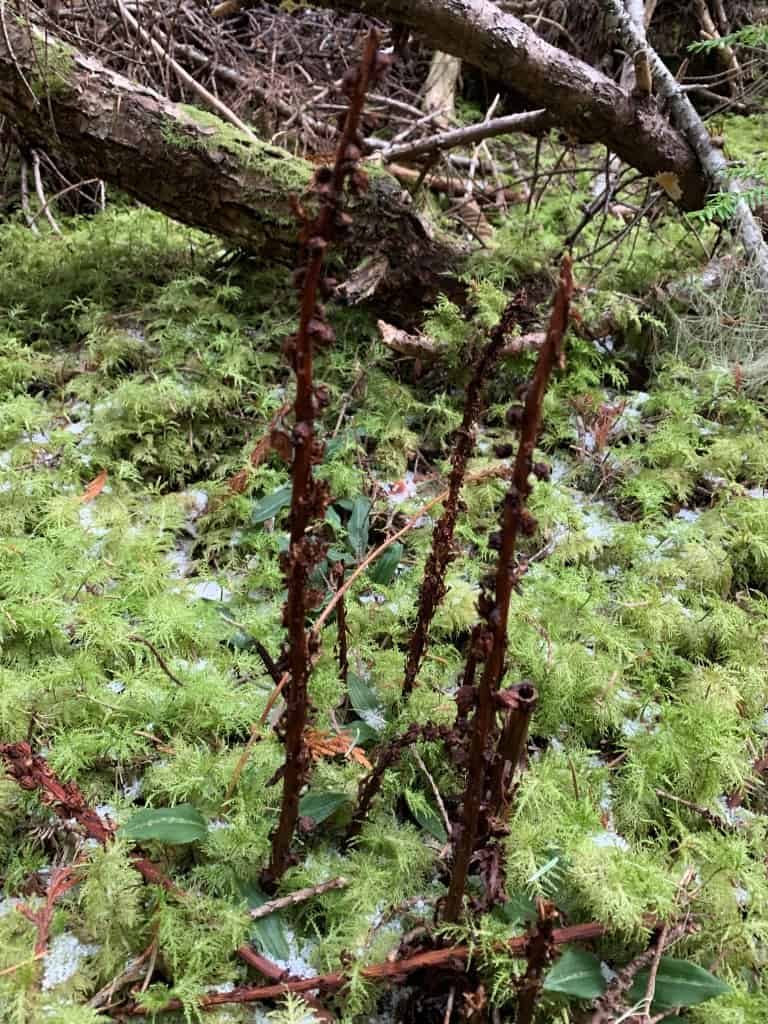
If you find it during the summer months, take note of where and head back there during matsutake season. If you find this plant during the late fall or early winter months it will look like the picture to the left, so don’t just pass this dormant plant by without looking around the area. This fall we actually found sugar-stick during matsutake season and low and behold we found a nice cluster of matsutake mushrooms about eight feet away. This is the most reliable indicator plant for this mushroom and noting its location in either summer of winter will pay off when matsutake mushrooms are inspired to fruit.
These are only a few of Oregon’s chlorophyll challenged parasitic plants, sometimes referred to as Fungus Flowers due to their dependence on fungal mycelium for carbohydrates. While they tap into the mycelium networks of fungi they do not kill their hosts. They represent an interesting and somewhat bizarre life form growing in our forests. Just another thing to look out for while hiking around all the amazing forests Oregon has to offer.
References:
Wildflowers of the Pacific Northwest – Pine drops
Wildflowers of the Pacific Northwest – Indian pipe
Wildflowers of the Pacific Northwest – Candy Stick
Parasitic Plants with no chlorophyll
INaturalist – Allotropa virgata
Pictures:
Leech Picture – Wikipedia
Pterospora andromedea & Monotropa uniflora Pictures – U.S. Forest Service website
Allotopa virgata Picture – Inaturalist website


